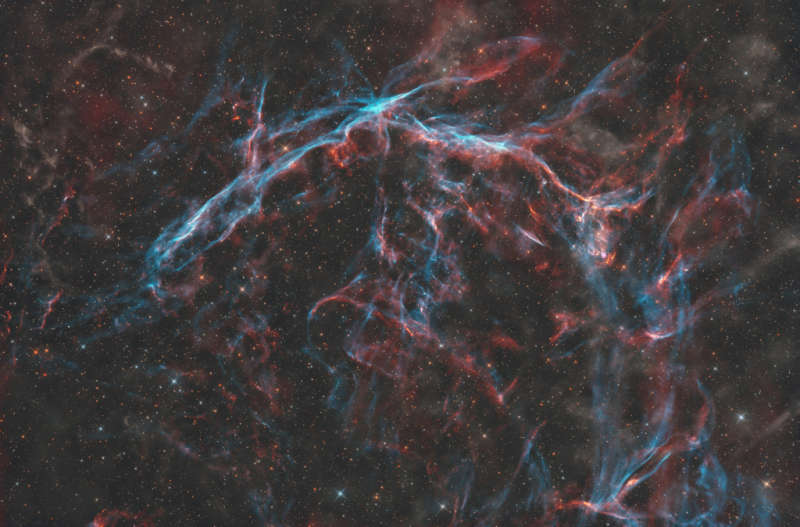
|
Credit & Copyright: Thomas Lelu
Explanation:
There is a
quiet pulsar
at the heart of CTA 1.
The supernova remnant was
discovered as a
source of emission
at radio wavelengths
by astronomers in 1960
and since identified as the result of the
death explosion of a massive star.
But no radio pulses were detected from the expected pulsar, the
rotating neutron star
remnant of the massive star's collapsed core.
Seen about 10,000 years after the initial supernova explosion,
the interstellar debris cloud is faint at optical wavelengths.
CTA 1's visible wavelength
emission from still expanding shock fronts is revealed in
this deep telescopic image,
a frame that spans about 2 degrees across a
starfield in the northern constellation of Cepheus.
While no pulsar has since been found at radio wavelengths,
in 2008 the
Fermi Gamma-ray Space Telescope
detected pulsed emission from CTA 1,
identifying the supernova remnant's
rotating neutron star.
The source has been recognized as the first
in a growing class of pulsars that are quiet at radio wavelengths but
pulse
in high-energy gamma-rays.
|
January February March April May June July August September October November December |
| ||||||||||||||||||||||||||||||||||||||||||||||||
NASA Web Site Statements, Warnings, and Disclaimers
NASA Official: Jay Norris. Specific rights apply.
A service of: LHEA at NASA / GSFC
& Michigan Tech. U.
Based on Astronomy Picture
Of the Day
Publications with keywords: pulsar - gamma ray
Publications with words: pulsar - gamma ray
See also:
- APOD: 2025 August 24 Á The Spinning Pulsar of the Crab Nebula
- APOD: 2024 August 21 Á Fermis 12 year All Sky Gamma ray Map
- APOD: 2024 July 23 Á The Crab Nebula from Visible to X Ray
- APOD: 2023 September 6 Á HESS Telescopes Explore the High Energy Sky
- Supernova Cannon Expels Pulsar J0002
- The Spinning Pulsar of the Crab Nebula
- Flashes of the Crab Pulsar
